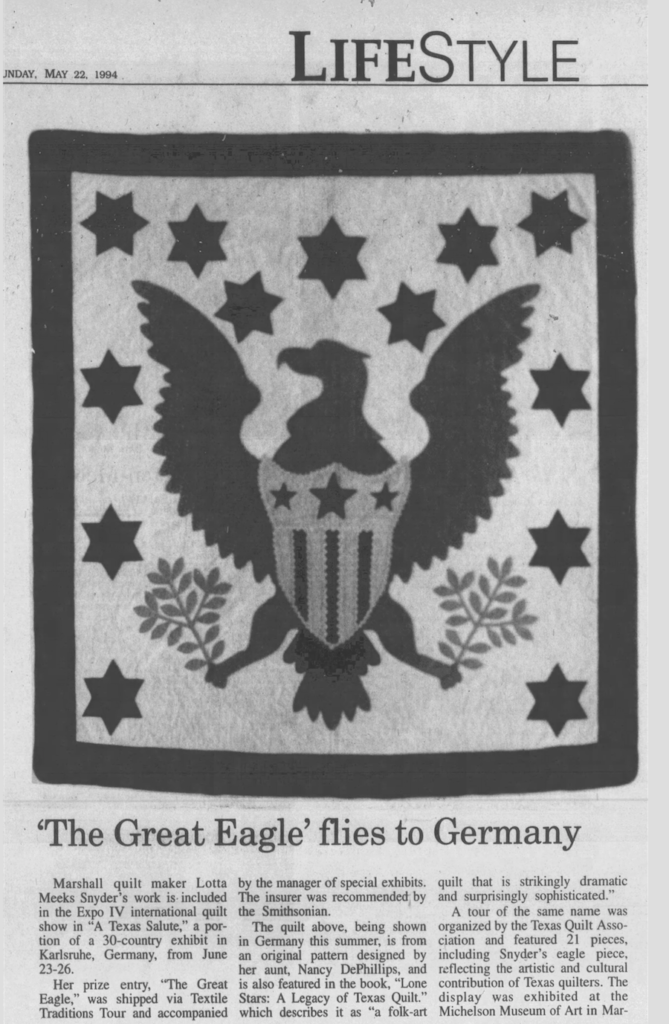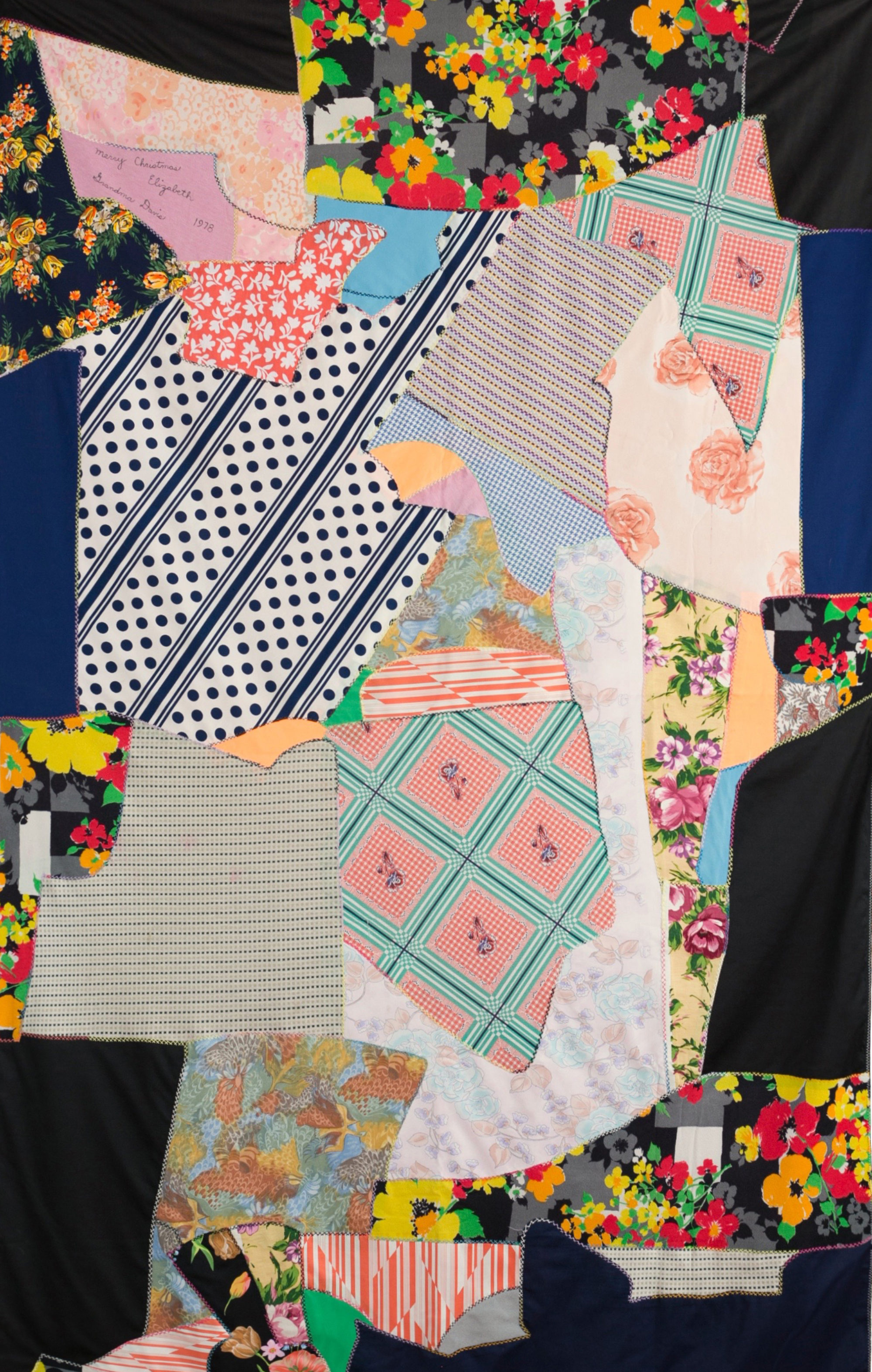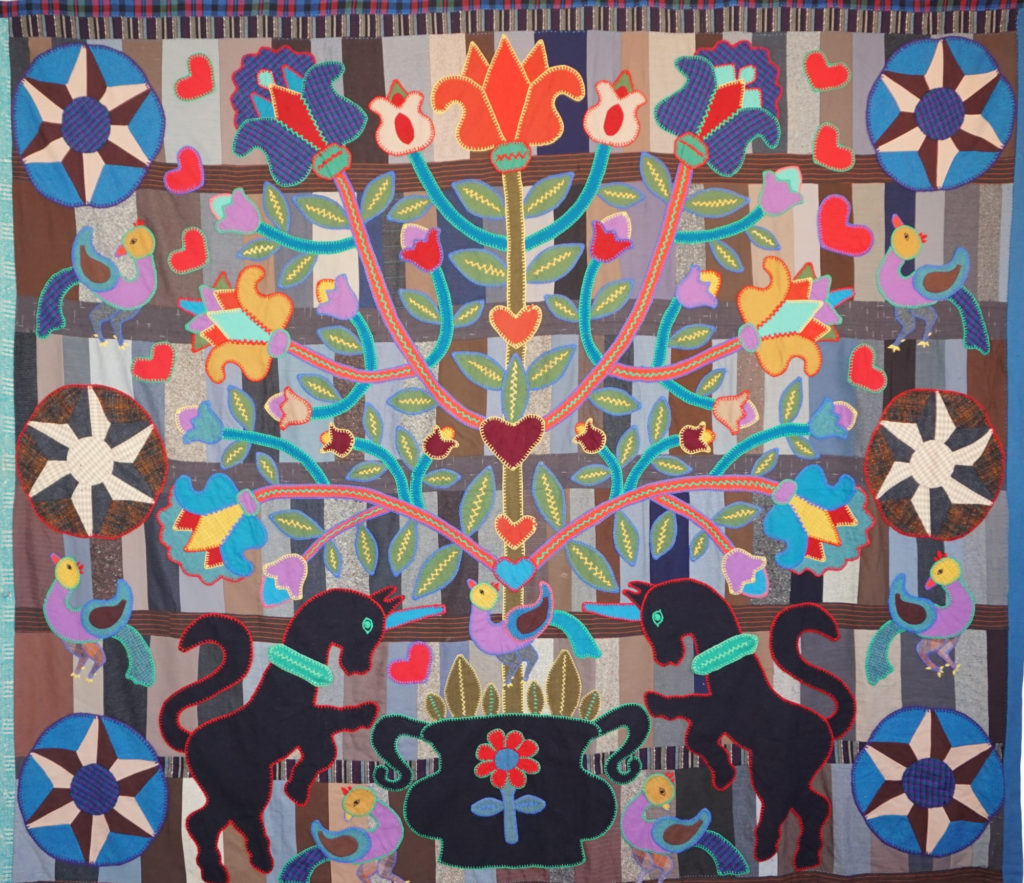
“There is no other tapestry in the world exactly like it. I created it completely in my own mind. I know from Dutch history that the Dove, Tulips, hearts, unicorns and the Tulip tree planted in the old black iron pots were their chief expressions of Art. So I created one for you and sister. Now, this tapestry I made for Sister is more colorful but I like yours best.”
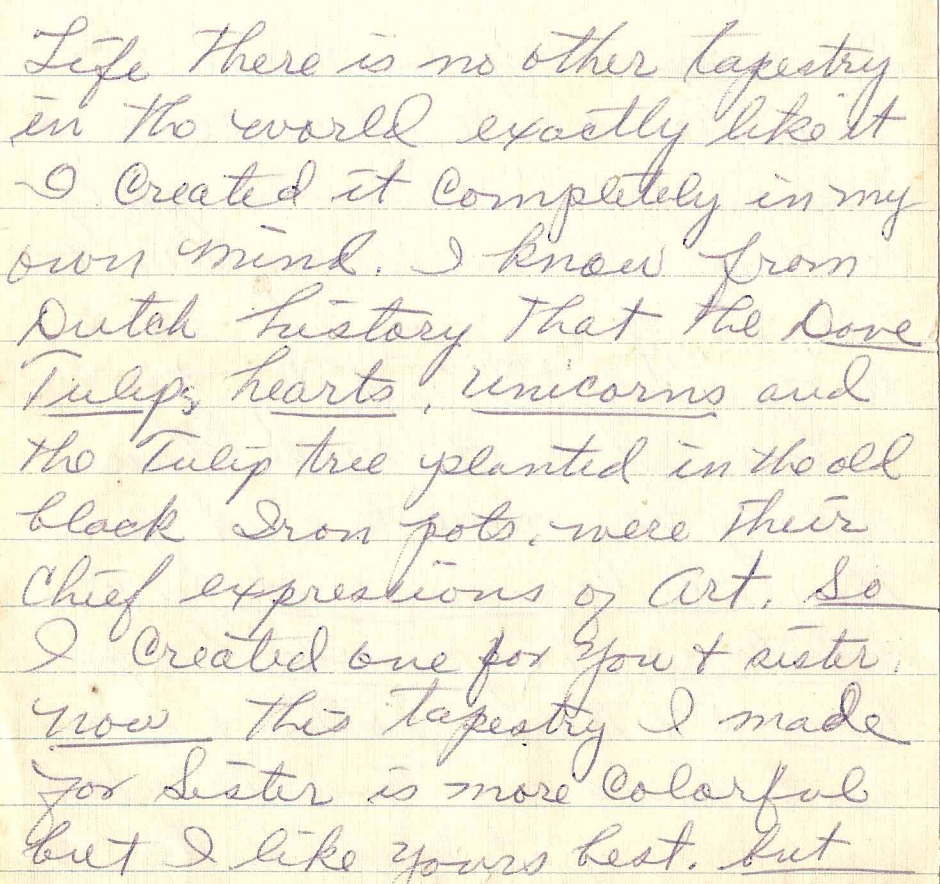
In her 1965 letter, addressed “Dear child”, Nancy Maude Payne DePhillips wrote to her niece about two art pieces she had created inspired by the art of the Pennsylvania Dutch. She referred to them as tapestries, which they are. But she used as a foundation for at least one–pictured here–a classic wool stacked bars quilt top. And she referred to it as a top in instructions she gave for backing it.
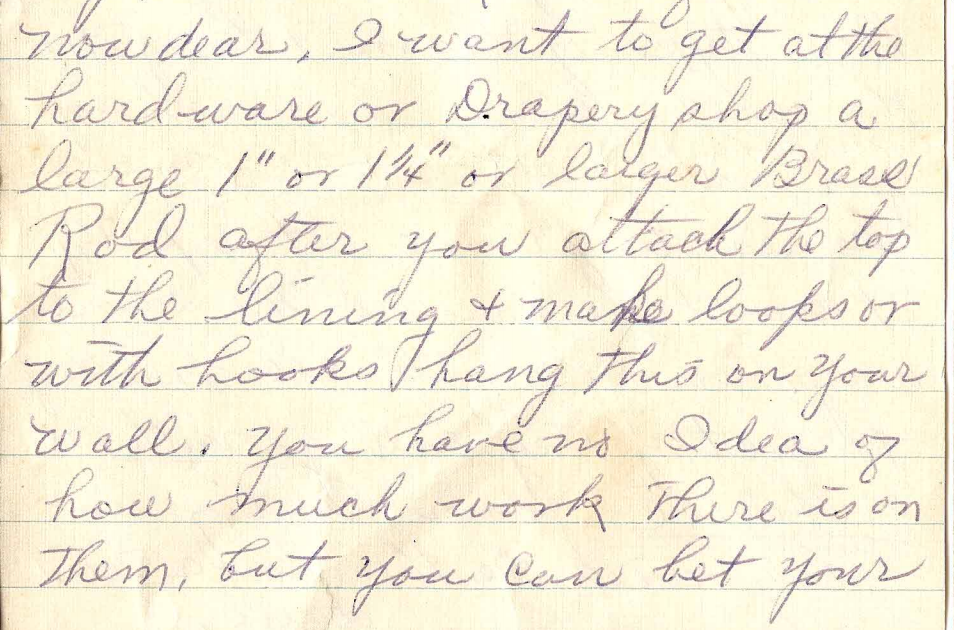
“You have no idea how much work is on them,” she said.
Nancy named it the Penn Dutch Tulip Tree of Life, and called it a collector’s item.

A collector’s item it most certainly is.
This quilt was created by the great-aunt of a Marshall, Texas family that is rich in quilts. My sister acquired it at an estate sale in early 2017 after the great-niece of Nancy DePhillips passed away. I traded my sister five of my best antique quilts to bring it home with me.
But it’s not an East Texas quilt, as the quilt-maker was born in Oklahoma Territory in 1897, grew up in Quay County, New Mexico, and died in Arkansas.
Being out in New Mexico, I don’t get to go to the estate sales my sister goes to in North East Texas, where there is an embarrassment of riches when it comes to quilts. So I end up buying quilts from all over the country, from online quilt markets mainly. It’s very rare to get the name of a quilt-maker, even when I purchase a quilt from someone who says they got it from an estate sale. Most people are friendly and well-meaning when I make inquiries, but don’t have the time to go the extra mile to find out more information for some strange quilt fangirl in New Mexico.
So I was pretty thrilled when sister was able to point me to one of the family members, Kay, who gave me Nancy’s name and a little bit of history. But she also directed me to her sister, Donna, who proceeded to delve into her archives to find a letter Nancy had written about this very quilt, in 1965.
It doesn’t get much better than a letter by a quilt-maker describing not only the quilt itself, but proclaiming it something created from their very own mind, and a collectors item to boot.
Nancy was very proud of her work. She wanted it to hang on the wall. And one can see why.
In the letter, she gave instructions on how to finish the piece. Go to “all the rummage and church affairs,” she said, “and see if you can find a bright red flannel or wool of some kind to bind the edges with.”
And, “…when you attach the front side to the lining be sure you use nylon or wool thread or it won’t look worth a darn.”
“You must use (large quilt) frames to set these tapestries properly & work them with the kind of art stitches you like for them to come into their own in beauty.”
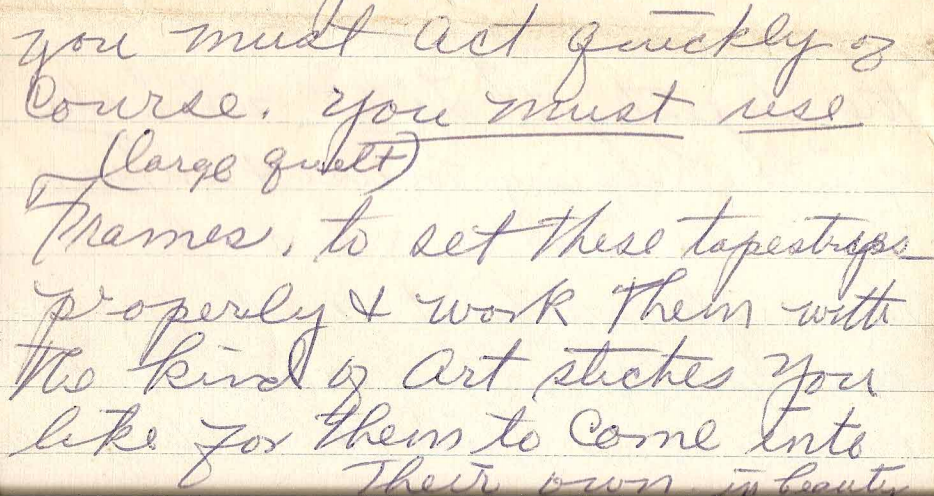
1965 was the leading edge of what has since been described as the great American quilt revival of the 20th century, which saw a quilting resurgence that blossomed through the 1970s and led to the robust art world centered on quilts today.
Nancy would have been 68 years old in 1965. She was a quilt designer and a quilt maker. It’s a mystery, as of yet, why she was inspired to create a Pennsylvania Dutch motif. Perhaps her husband was from Pennsylvania and she visited there. A newspaper archive search shows the surname DePhillips is particularly prevalent in that state.
At least one of her quilt designs is featured in a 1994 Marshall News Messenger article that featured a quilt made by her niece, Lotta, who was an award-winning quilt maker in her own right:
